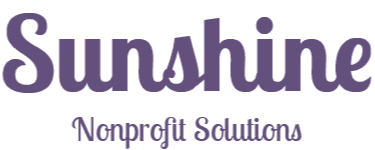Designation Renewal System (DRS)

The Designation Renewal System (DRS) is an essential process for Head Start and Early Head Start programs, offering a valuable opportunity to refine and strengthen your program. While it demands significant effort, completing the DRS successfully ensures that your program meets its full potential and maximizes the benefits for the children and families you serve.
Key Aspects of the DRS Process:
- Start Early for Success:
Begin your DRS grant planning early to address the seven unique sections of the application. Early preparation allows you to identify areas of improvement, ensuring that your application is robust and impactful.
Invest in adjustments and enhancements to your program to align with DRS requirements and stand out in the application process.
- Creating an Effective Statement of Need:
Base your statement on a comprehensive community assessment. If the assessment is outdated, prioritize updating it for a stronger proposal.
Use visual aids like pie charts and bar graphs to clearly present community data, demonstrating how your proposed services align with the community’s needs.
Focus on detailing age- and income-eligible children in specific zip codes and provide evidence of established partnerships with other service organizations.
- Detailed Description of Head Start Services:
Explain the evidence-based curriculum you use and how you track child development and achievements.
Outline strategies for dual-language learners and assessing health outcomes for children and families.
Highlight family engagement efforts, including connecting families to essential health services, such as dental and mental health care.
- Safe and Supportive Learning Environment:
Ensure your proposal emphasizes a secure, inclusive, and nurturing classroom environment.
Demonstrate positive relationships between staff and families, underpinned by ongoing monitoring through tools like CLASS and Family Readiness Checklists.
- Ongoing Program Improvement:
Begin by reviewing past Federal review results and addressing areas of non-compliance with your Head Start program.
Apply the Appreciative Inquiry (AI) framework to drive improvements by building on existing strengths rather than focusing solely on weaknesses. This positive, strengths-based approach has proven effective in strengthening Head Start programs during the DRS process.
- Head Start Workforce Strategy:
Describe your staff’s qualifications, including their education, experience, and competencies, with a focus on mental health support for employees.
Highlight key components such as:
- Mental health support: Emphasize the importance of providing meaningful mental health support, beyond just “mental health days,” to ensure staff well-being.
- Fair compensation: Address the importance of offering a living wage, benefits, and relative pay equity across roles.
- Workplace culture: Illustrate how your organization fosters a nurturing, respectful environment where staff are valued and motivated to thrive.
- Professional development: Discuss how staff development is aligned with career goals and how positive feedback mechanisms support continuous improvement.
By focusing on these critical elements, Sunshine Nonprofit Solutions ensures that your Head Start program is prepared to meet the rigorous standards set by the DRS and positions it for long-term success and sustainability.
Strategic Head Start Budgeting
Creating a detailed and well-structured budget is vital when applying for the DRS proposal. It demonstrates your understanding of financial needs and your ability to manage funds effectively to achieve program goals. The budget should be broken down into clear, itemized categories:
1. Salaries, Wages, and Benefits (80% of Budget)
Personnel costs, including salaries and benefits for teachers, administrative staff, and support staff, make up the largest portion of the budget.
2. Administrative Costs (<15% of Budget)
Administrative expenses related to the management and operation of the program must stay within the allowed limit.
3. Training and Technical Assistance
Allocate funds for professional development and training, including workshops, certifications, and technical support for staff.
4. Program Resources and Family Development
Funds should be allocated for classroom supplies, family resource centers, and family training workshops.
5. Health Services and Partnerships
Partner with health providers for child health services, including screenings and contributions from local health services.
6. Technology
Invest in software and hardware that streamline administrative tasks, such as managing student records and reducing reliance on older equipment.
7. Donations and In-kind Contributions (20% of Budget)
Include donations of goods, services, and cash from community partners to support program operations.
Align Budget Priorities with Program Goals
Ensure the budget reflects the program's goals, focusing on creating a positive learning environment, supporting family engagement, and ensuring child well-being.
Ensure Costs Are Reasonable and Allowable
All costs should be reasonable, necessary, and allowable under grant guidelines, avoiding unnecessary or unrelated expenses.
Itemized Line Item Budget
Provide a detailed breakdown of each expense category, demonstrating thorough planning and transparency.
Justify Each Expense
Explain how each expense contributes to the program's goals and why it is necessary for success.
A well-prepared budget is essential for ensuring the success of a Head Start program grant proposal.
